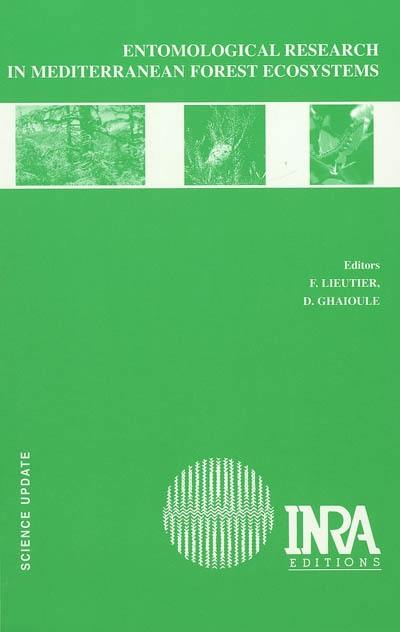
Fiche technique
Format : Broché
Nb de pages : 275 pages
Poids : 503 g
Dimensions : 16cm X 24cm
EAN : 9782738011947
Entomological research in Mediterranean forest ecosystems
Quatrième de couverture
Mediterranean forest ecosystems have been submitted for millenniums to intensive continuous human pressures combined with deep modifications in their various components, resulting in the present unbalanced situation of these ecosystems. This situation, exacerbated during the last decades by long range climatic modifications, is responsible for the today alarming sanitary conditions of the Mediterranean forest on a large scale. No region is spared and most tree species are concerned, be they introduced, pseudo-climax or primitive. Eucalyptus plantations, pine stands, primitive cork-oak and cedar forests all exhibit living trees that are prey to insects and fungi, often extending over large dieback areas. The Mediterranean ecosystems have also always been characterized by a high diversity of living organisms, both animal and plants. Mediterranean areas are thus highly favourable places to study biocenotics and plant-animal evolutionary relationships. They also provide numerous models for closely related situations, which is very useful for comparisons and building general rules. Owing to the intense human pressure, preservation of the biodiversity in these areas is also a crucial problem on all scales, from genes to landscapes. The objective of this book is to show the diversity of the entomological problems in the forested Mediterranean areas and its ambition is to be used as a basis to elaborate future cooperative research. It has been built from selected presentations at the first international symposium "MEDINSECT", organized jointly by the Institut National de la Recherche Agronomique (INRA, France), the Centre National de la Recherche Forestière (Rabat, Morocco) and the University of Orléans (France), in Rabat from 6 to 11 May 2002 on the Entomological Research in Mediterranean Forest Ecosystems, completed by additional syntheses. The topics largely exceed the Mediterranean basin itself. In addition to the north and the south rims of the Mediterranean Sea, New Zealand, South African, and North and Central American situations are examined. A general overview of the entomological situation and research topics in the forests of these different regions is made, and detailed examples of research carried out in these areas are presented, including life cycles and general biology of pests, control methods, relations with host trees, inter- and multi-specific relationships. The ecosystem functioning and the necessity of biodiversity preservation on all scales are also present.





